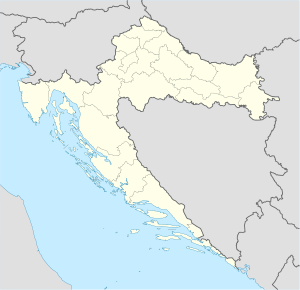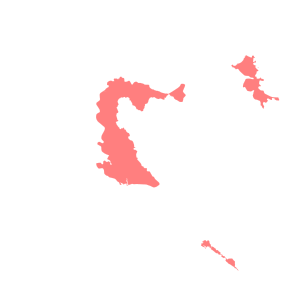Baćin massacre
| Baćin massacre | |
|---|---|
| Part of the Croatian War of Independence | |
|
Baćin on the map of Croatia, JNA/SAO Krajina-held areas in late 1991 are highlighted in red
|
|
| Location | Baćin, Croatia |
| Coordinates | 45°12′11″N 16°45′21″E / 45.203025°N 16.755828°ECoordinates: 45°12′11″N 16°45′21″E / 45.203025°N 16.755828°E |
| Date | 21 October 1991 |
| Target | 81 Croatian and 2 Serbian civilians |
|
Attack type
|
Summary executions |
| Deaths | 83 |
| Perpetrators | SAO Krajina forces |
The Baćin massacre was the killing of 83 civilians just outside the village of Baćin, near Hrvatska Dubica, committed by Croatian Serb paramilitaries. The killings took place on 21 October 1991 during the Croatian War of Independence. Most of the civilians were Croats, but they also included two ethnic Serbs, taken from Hrvatska Dubica, Baćin and the nearby village of Cerovljani. The civilians were killed in the area of Krečane, at the very bank of the Una River, and their bodies were left unburied for two weeks. Most of them were subsequently bulldozed into a shallow mass grave, while a number of the bodies were thrown into the river.
The killings followed the takeover of Hrvatska Dubica and its immediate surroundings by the Serbian Autonomous Oblast Krajina (SAO Krajina) and the Yugoslav People's Army (Serbian Latin: Jugoslovenska Narodna Armija – JNA) following the withdrawal of the Croatian National Guard (Croatian: Zbor narodne garde – ZNG) in mid-September, when the bulk of the civilian population left the area. The remaining Croat population in the area was either killed or expelled by November. A mass grave containing the bodies of 56 civilians killed in Baćin was uncovered in 1997, two years after Croatia recaptured the area. The event was included in the International Criminal Tribunal for the former Yugoslavia (ICTY) indictment against Slobodan Milošević and the ICTY indictment against Milan Martić. Milošević died before his trial concluded, and Martić was convicted and sentenced to 35 years in prison. Croatian authorities prosecuted and convicted seven other former SAO Krajina officers and officials in connection with the killings.
...
Wikipedia


